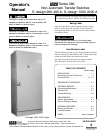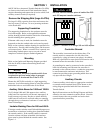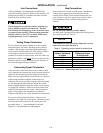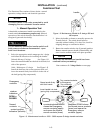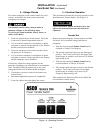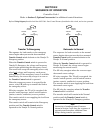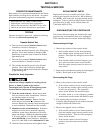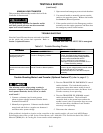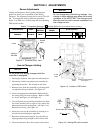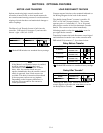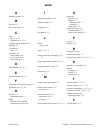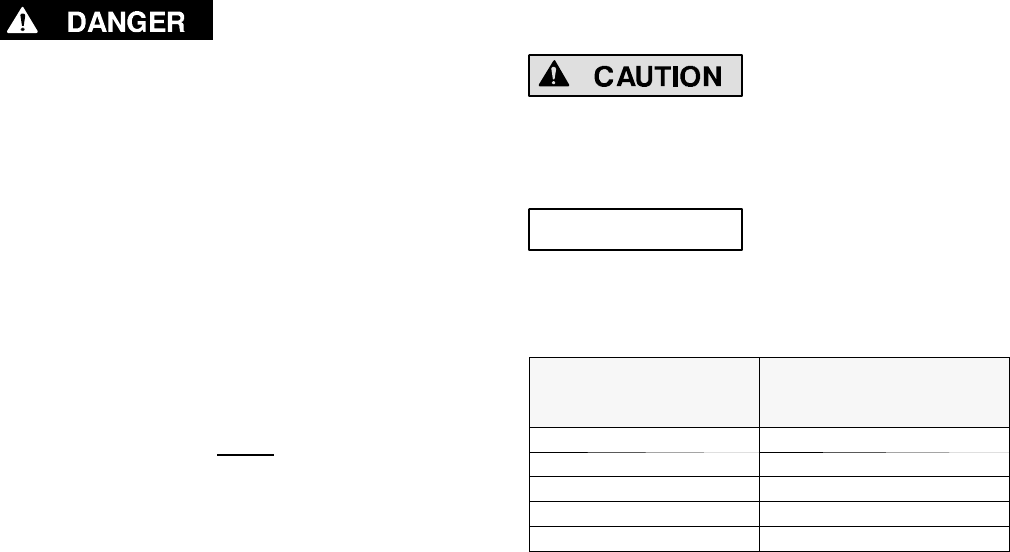
INSTALLATION (continued)
1 --- 2
Line Connections
A Wiring Diagram is furnished with the ASCO 386
(separate from this manual). Refer to this drawing. All
wiring must be made in accordance with the National
Electrical Code and local codes.
De–energize the conductors before making any
line or auxiliary circuitry connections. Be sure
that Normal and Emergency line connections are
in proper phase rotation. Place engine generator
starting control i n the OFF position. Make sure
engine generator is not in operation.
Testing Power Conductors
Do not connect the power conductors to the t ransfer
switch until they are tested. Installing power cables in
conduit, cable troughs and ceiling-suspended hangers
often requires considerable force. The pulling of cables
can damage insulation and stretch or break the
conductor’s strands. For this reason, after the cables are
pulled into position, and before
they are connected, they
should be tested to verify that they are not defective or
have been damaged during installation.
Connecting Power Conductors
After the power cables have been tested, connect them
to the appropriate terminal lugs on the transfer switch as
shown on the wiring diagram provided with the switch.
Make sure the lugs provided are suitable for use with the
cables being installed. Standard terminal lugs are
solderless screw type and will accept the wire sizes listed
on the drawings provided with the switch. Be careful
when stripping insulati on from the cables; avoid nicking
or ringing the conductor. Remove surface oxi des from
cables by cleaning with a wire brush. When aluminum
cable is used, apply joint compound to conductors.
Tighten cable lugs to the torque specified on rating label.
Do not run cables behind the switch. Cables can be
bundled on the right side of t he switch. Maintain proper
electrical clearance between the live metal parts and
grounded metal: ½ inch minimum for 260-400
amperes, 1 inch minimum over 400 amperes.
Bus Connections
If bus connection is used, use SAE grade 5 hardware to
connect bus to appropriate terminal plates on the
transfer switch. Wipe off bus surfaces before they are
joined. If bus is very dirty, gently clean surfaces with a
non–flammable solvent. Avoid touching cleaned
surfaces.
Do not breathe cleaning solvent vapors.
UseSAEgrade5hardwareandtightentheboltedjointsto
thetorquespecifiedinTableA.
NOTICE
The reliability of the connection depends on how
clean and how tight the joint is.
Table A. Tightening t orque values for bolted joints.
Bol t Diameter
(Grade 5 hardware)
in inches
Recommended
Tightening Torque
in foot pounds
5/16 12
3/8 20
1/2 50
5/8 95
3/4 155
Continue to 1–ManualOperationTest on next page.



